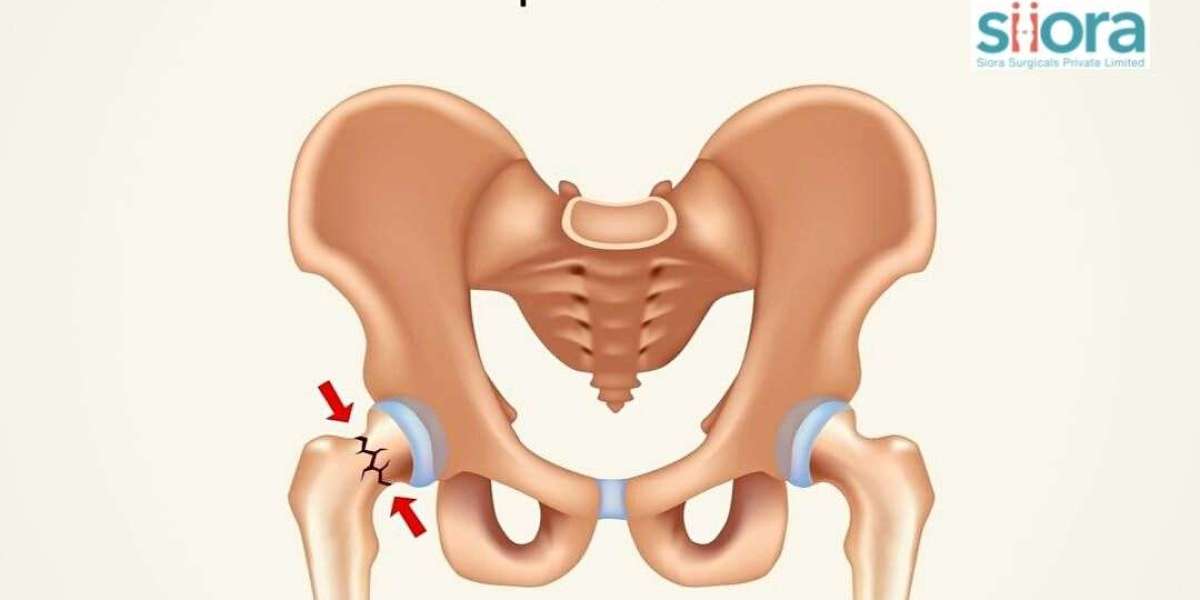Osteoporotic fractures are a serious public health concern, affecting millions of people worldwide, especially older adults. These fractures occur when bones become fragile due to reduced bone mass and deterioration of bone tissue. Often referred to as the "silent disease," osteoporosis can lead to fractures with minimal trauma, like a simple fall or even a cough. In some cases, these fractures could be so severe that surgery may be required for the treatment. It may also involve the use of orthopedic implants and instruments.
An Introduction
Osteoporotic fractures predominantly occur in weight-bearing bones, such as the spine, hips, wrists, and ribs. The most common fractures related to osteoporosis are hip fractures and vertebral (spinal) fractures. These fractures can cause severe pain, and loss of mobility, and even lead to long-term disability or mortality, especially in older adults.
Impact on Individuals
Osteoporotic fractures can have a significant impact on an individual's quality of life. They may experience physical limitations, chronic pain, and reduced independence. Psychological effects, such as anxiety and depression, are also common due to the sudden change in lifestyle and fear of future fractures.
Risk Factors
Several risk factors contribute to the development of osteoporosis and subsequent fractures:
Age and Gender: Osteoporosis is more prevalent in older individuals, and women are at a higher risk, especially after menopause when estrogen levels decline.
Family History: A family history of osteoporosis or fractures may increase the likelihood of developing the condition.
Low Bone Density: People with lower bone density have a higher risk of fractures.
Hormonal Changes: Hormonal imbalances, such as low testosterone levels in men, can contribute to osteoporosis.
Lifestyle Factors: Sedentary lifestyle, tobacco and alcohol use, poor nutrition, and inadequate vitamin D and calcium intake can all increase the risk of osteoporosis.
Prevention
Preventing osteoporotic fractures involves a combination of lifestyle modifications and medical interventions:
Nutrition: Consuming a balanced diet rich in calcium and vitamin D is essential for maintaining bone health. Dairy products, leafy greens, and fortified foods are excellent sources of these nutrients.
Regular Exercise: Weight-bearing exercises and strength training can help improve bone density and strength. Physical activity also enhances balance and reduces the risk of falls.
Avoiding Smoking and Excessive Alcohol: Quitting smoking and limiting alcohol consumption can significantly reduce the risk of osteoporosis.
Bone Density Testing: Regular bone density tests can help identify low bone mass early on, allowing for timely interventions.
Treatment Options
If osteoporosis is diagnosed or suspected, several treatment options can help manage the condition and prevent fractures:
Medications: Bisphosphonates, hormone replacement therapy, and other medications can slow bone loss and reduce fracture risk.
Fall Prevention Strategies: Identifying and addressing fall risks in the home environment can help prevent fractures.
Calcium and Vitamin D Supplements: In some cases, supplements may be prescribed to ensure adequate intake of these essential nutrients.
Conclusion
Osteoporotic fractures are a significant health issue, affecting the well-being and independence of millions worldwide. By understanding the risk factors, preventive measures, and available treatments, individuals can take proactive steps to maintain bone health and reduce the risk of fractures. Regular bone density testing, a balanced diet, exercise, and a healthy lifestyle are essential in combating osteoporosis and its debilitating effects. It is crucial to raise awareness about osteoporotic fractures to ensure early detection, proper management, and ultimately, a better quality of life for those affected.
Register for the top Conferences on Orthopedics 2023 to know about recent trends in the industry and explore a huge showcase of the latest and advanced orthopedic implants and instruments.








